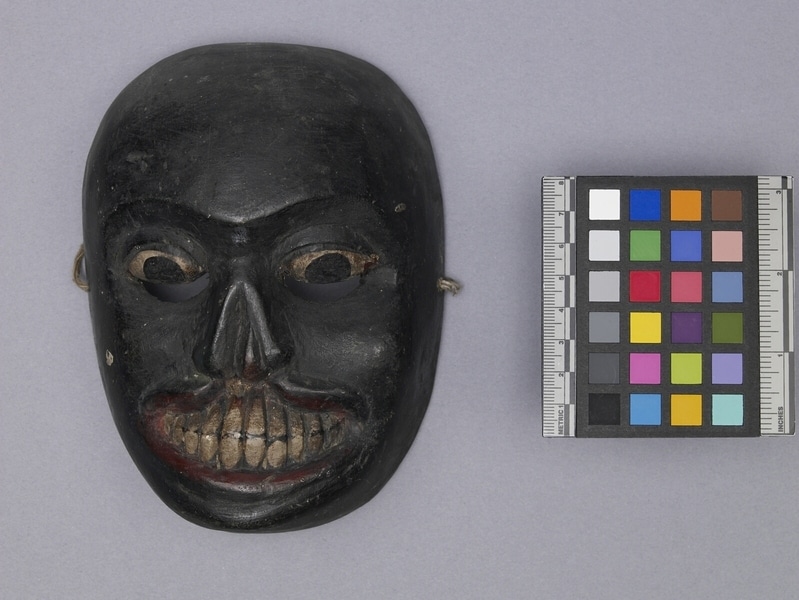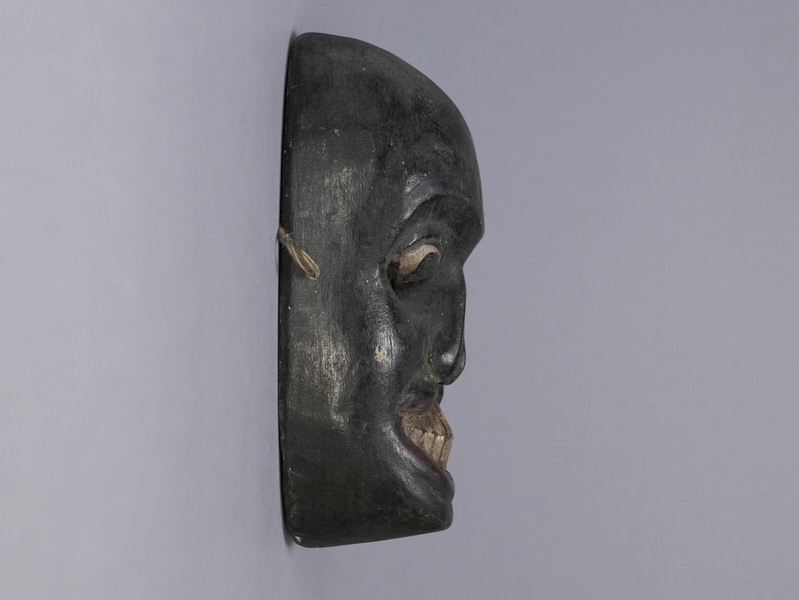Mask Item Number: Eh130 from the MOA: University of British Columbia




Description
Mask possibly depicting Vevulum Sanniya (shivering and feats) that is painted black overall with a bulging rounded forehead and eyebrows that form one curved ridge above the recessed eye sockets. The triangular, flattened nose has one deep cleft slightly off-centre and one smaller cleft on the left side of the nose. The red lips are drawn back with a split upper lip and expose the large teeth. A hole has been pierced on either side of the mask and a string is threaded through them. Inscribed with "VEVULUM SANNI" on reverse.
History Of Use
This mask best fits the description of Kora Sanni, the demon causing lameness. Worn during the Sanni ceremony by a dancer representing the Kora demon. Sanni is a healing and exorcising dance ritual which is part of the Tovil ceremony in which masked dances are performed in the open. Three characters take part; the exorcist, the dancer impersonating the demon, and the drummer. The Sanni dances are performed at about 2 a.m. in the third and final stage of the ceremony. The Sanni ritual combines drama, mime, and pantomime, and the effect is at once psychomatic, dramatic and cathartic. The exorcist and the demon carry on a witty and ribald dialogue accompanied by distinctive drum beats.
Iconographic Meaning
The black facial colour with the split nose culminating in a hare lip identifies this mask as Kora Sanni, representing lameness.
Cultural Context
ritual;exorcism
Item History
- Made in Mudagama, Sri Lanka before 1983
- Collected during 1983
- Owned by Ari Ebert
- Owned by Jason Schoonover before June 21, 1984
- Received from Museum of Anthropology Shop Volunteers (Funding source) and Jason Schoonover (Seller) on June 21, 1984
What
Who
- Culture
- Sinhalese
- Previous Owner
- Ari Ebert and Jason Schoonover
- Received from
- Museum of Anthropology Shop Volunteers (Funding source) and Jason Schoonover (Seller)
Where
- Holding Institution
- MOA: University of British Columbia
- Made in
- Mudagama, Sri Lanka
When
- Creation Date
- before 1983
- Collection Date
- during 1983
- Ownership Date
- before June 21, 1984
- Acquisition Date
- on June 21, 1984
Other
- Condition
- fair
- Current Location
- Case 107
- Accession Number
- 0972/0020